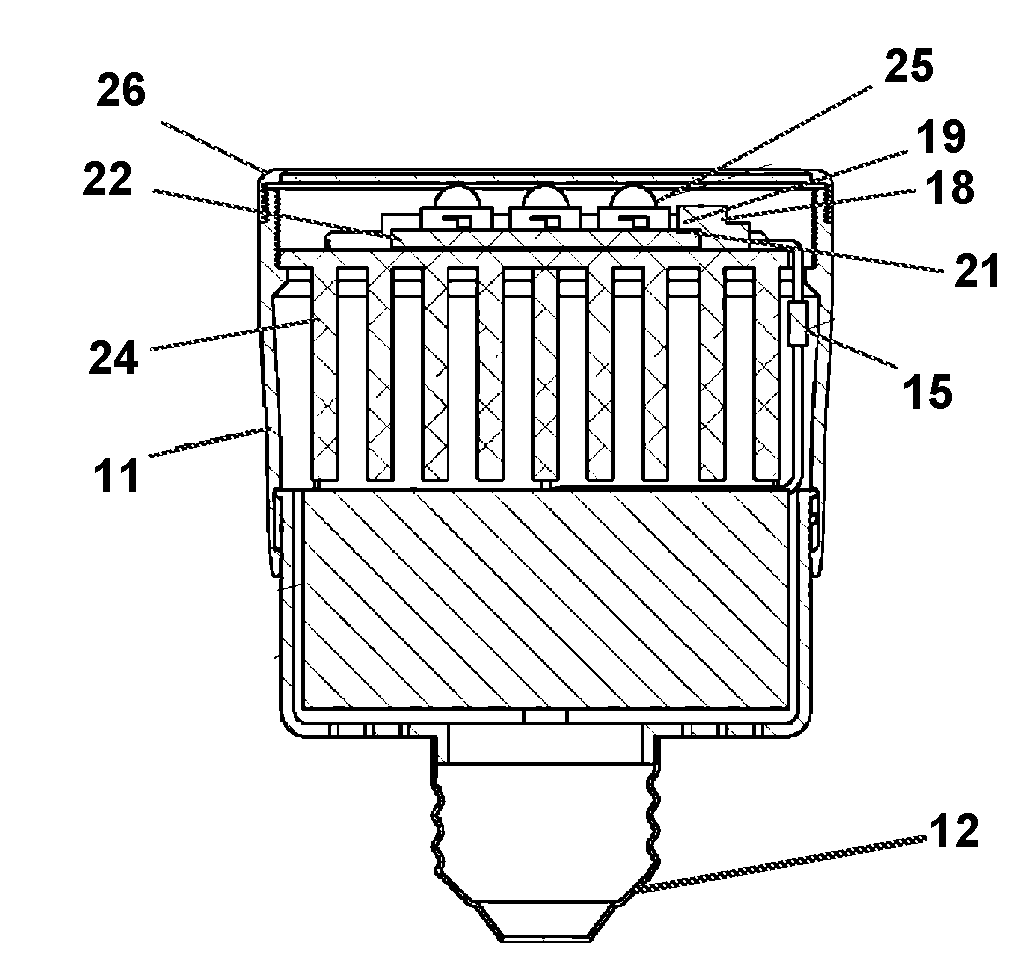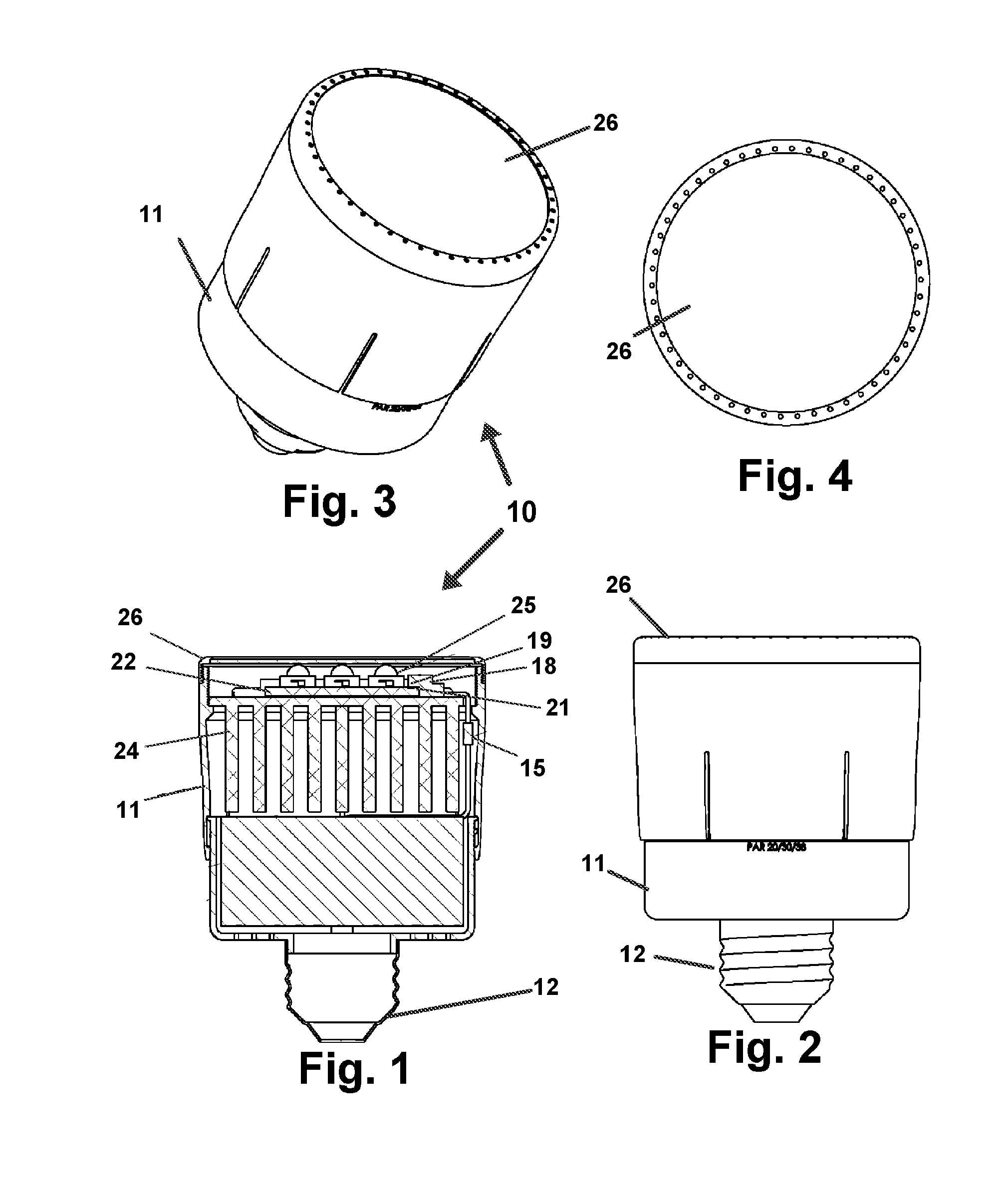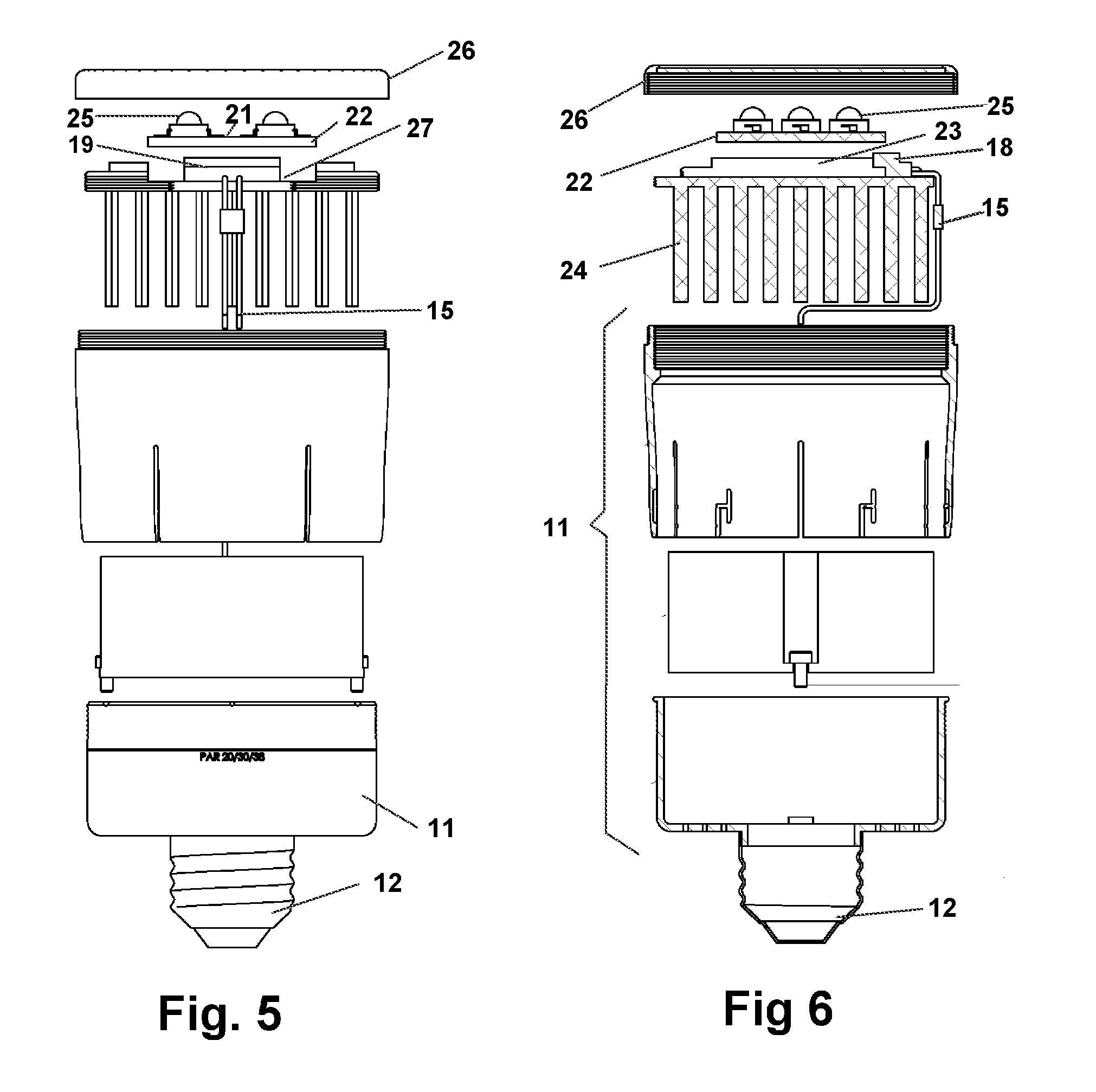Modular LED light system and method
- Summary
- Abstract
- Description
- Claims
- Application Information
AI Technical Summary
Benefits of technology
Problems solved by technology
Method used
Image
Examples
Embodiment Construction
[0046]Referring now to the drawings 1-19, wherein similar parts of the invention are identified by like reference numerals, there is seen in FIG. 1 the base 11, having a means for electrical engagement with a lighting fixture shown in the form of a conventional screw in electrical engagement component 12. Of course any means for operative engagement with a conventional light fixture, such as those depicted in FIGS. 18 and 19, may be employed so as to provide electrical power to the device 10 and allow engagement into conventional fixtures. This will insure wide deployment in a short time and increased ecological benefit from reduced energy use.
[0047]The base 11 so engaged communicates power from the fixture engaged with the engagement component 12 using wires 15 or other electrical means to communicate electrical power to a housing 18 which employs electrical contacts 19 in positions to register and engage with mating contacts 21 on the circuit board 22.
[0048]The employment of circu...
PUM
 Login to View More
Login to View More Abstract
Description
Claims
Application Information
 Login to View More
Login to View More - R&D
- Intellectual Property
- Life Sciences
- Materials
- Tech Scout
- Unparalleled Data Quality
- Higher Quality Content
- 60% Fewer Hallucinations
Browse by: Latest US Patents, China's latest patents, Technical Efficacy Thesaurus, Application Domain, Technology Topic, Popular Technical Reports.
© 2025 PatSnap. All rights reserved.Legal|Privacy policy|Modern Slavery Act Transparency Statement|Sitemap|About US| Contact US: help@patsnap.com



